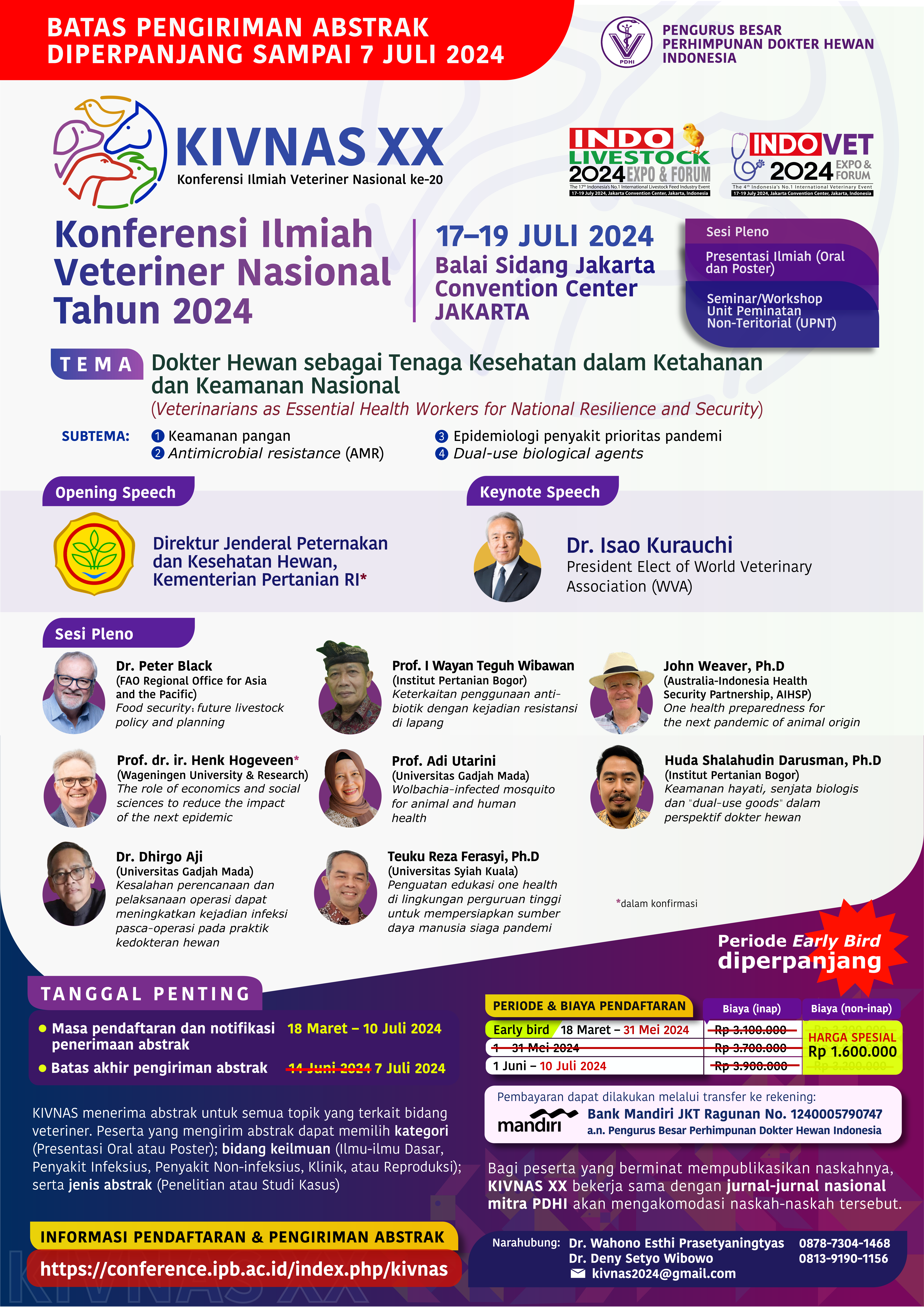Analytical Study of Echocardiography Results in Two African Lions (Panthera leo)
Keywords:
cardiac, echocardiography, Panthera leo, lionAbstract
Background: Echocardiography studies on big cats such as tigers (Panthera tigris), leopards (Panthera pardus), and cheetahs (Acinonyx jubatus) have shown that these species can have structural and functional heart abnormalities. However, echocardiography studies on lions (Panthera leo) are still understudied.
Objectives: This case study aims to be an initial study on establishing baseline echocardiography parameters in adult lions to improve the quality of lion health management in conservation settings.
Case Description: This study involved two male African lions. Lion A, approximately 11 years old, was clinically healthy, whereas Lion B, around 4 years old, had a history of illness with the clinical symptoms of dyspnea and hind leg weakness.
Treatments: Echocardiography on both lions was performed in the right and left lateral recumbency positions under anaesthesia using a combination of 1,5 mg/kg ketamine and 0,05 mg/kg medetomidine. The results were descriptively analyzed and compared with parameters in other big cat species and domestic cats (Felis catus) from other studies.
Results: Echocardiography showed that Lion A had an irregular hyperechoic lesion around the non-coronary aortic cusp and regurgitation of the pulmonary valve without structural abnormalities. Lion B had a thickened mitral valve with regurgitation and regurgitation of the aortic and pulmonary valves without structural abnormalities. The M-mode measurements of both lions showed that the left ventricular dimensions were similar to those of male tigers, but lion B had lower Fractional Shortening (FS) and Ejection Fraction (EF). Comparison with domestic cats showed that lion B had lower FS and EF. The relationship between these results and the lions' history of illness remains unclear and requires further analysis.
Conclusion: Descriptively, echocardiography revealed no differences between lion A and other cat species' baseline parameters, while lion B showed more pronounced distinctions. This case study can be used as an initial baseline for further research in determining basic echocardiography parameters in lions.



